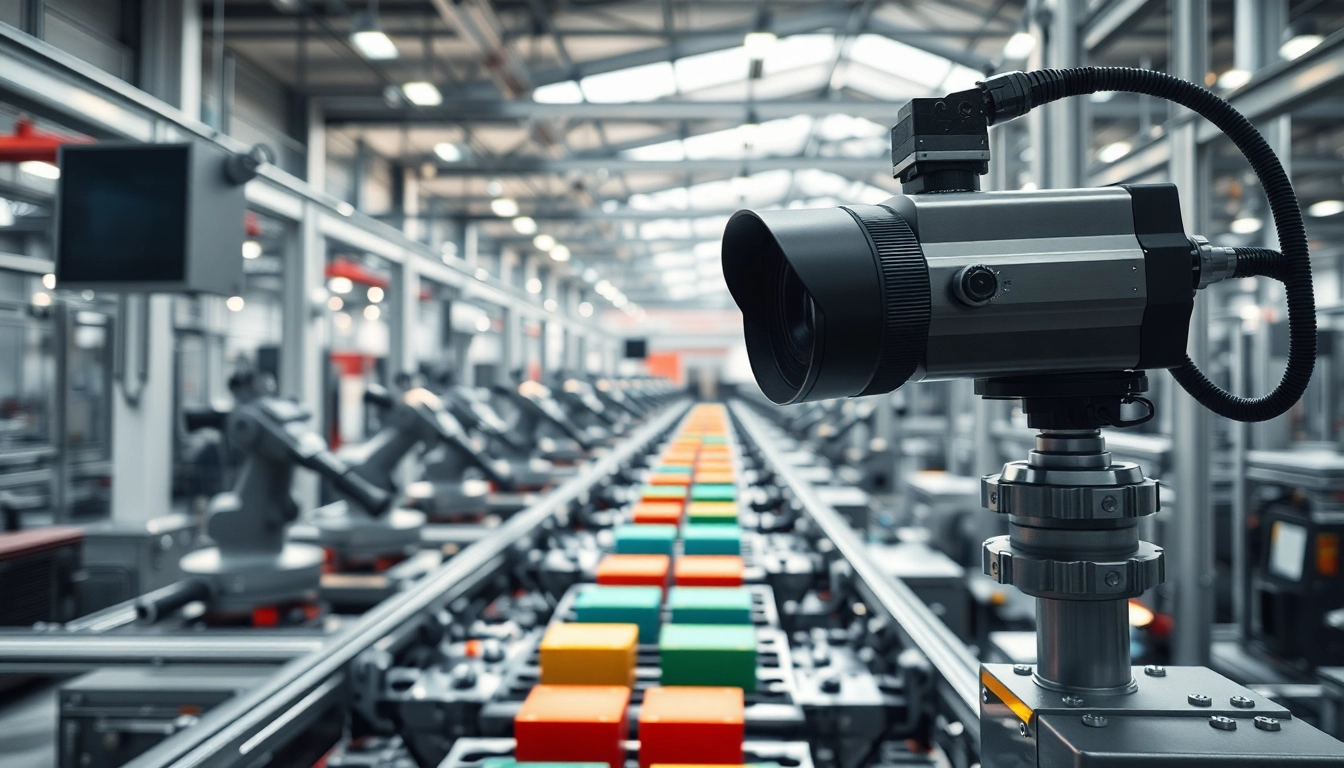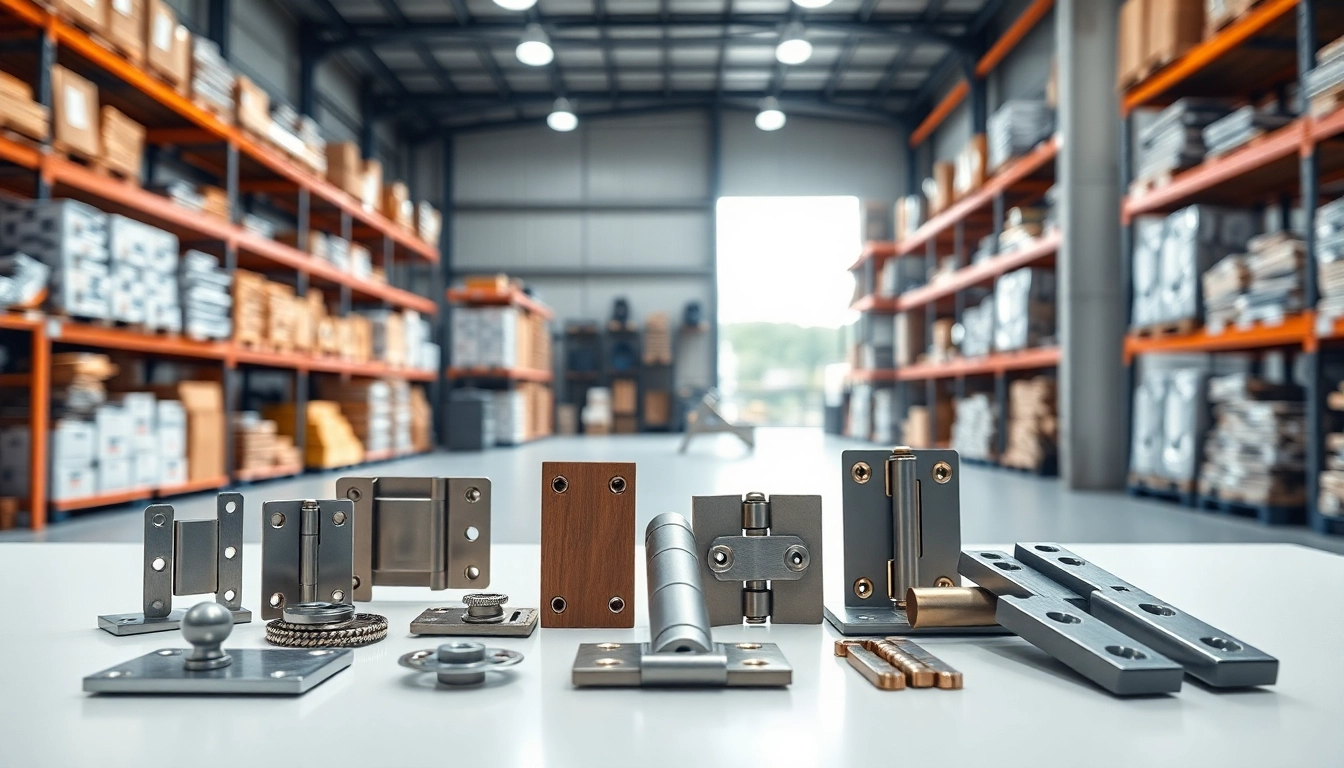What is Machine Vision?
Definition and Overview
Machine vision is a crucial technological domain that enables machines to perceive and interpret visual data. By leveraging various imaging systems, this technology processes specific tasks that require visual recognition and inspection. Essentially, machine vision employs advanced algorithms combined with hardware systems to make automated decisions based on visual insights. This capability is paving the way for significant improvements in sectors such as manufacturing, logistics, and quality control.
At its core, machine vision is about the automation of visual inspection, allowing machines to replicate human sight processes while performing intricate and repetitive tasks efficiently. Examples range from inspecting circuit boards for defects to guiding robotic arms in assembly lines, showcasing the versatility and essential role of machine vision across industries.
The Role of Machine Vision in Automation
Automation has revolutionized industries around the globe, with machine vision playing a pivotal role in its advancement. In the manufacturing sector, for instance, machine vision systems enhance productivity by minimizing the need for human operators in repetitive visual tasks. This reduction not only streamlines operations but also cuts labor costs significantly.
Moreover, machine vision increases accuracy in various processes, ensuring that products meet quality standards before they reach consumers. This function is critical in sectors where precision is paramount, such as automotive manufacturing, pharmaceuticals, and electronics. The integration of machine vision into production lines has resulted in enhanced throughput and fewer defects, thereby facilitating a more efficient use of resources.
Key Technologies Behind Machine Vision
Several technologies converge to enable machine vision capabilities. Central to these systems are cameras, which capture images of the target objects. High-quality imaging sensors, such as CCD (Charge-Coupled Device) or CMOS (Complementary Metal-Oxide-Semiconductor) are typical in modern machine vision applications for their ability to produce detailed images under varying conditions.
Complementing this are sophisticated lighting systems. Proper lighting is essential for ensuring the data captured is clear and usable. Techniques like backlighting, ring lighting, or diffuse lighting depend on the specific application requirements.
Once images are acquired, powerful software processes this data. Image processing algorithms analyze captured data for specific features and patterns. Machine learning techniques are increasingly integrated into these algorithms, allowing systems to ‘learn’ from previous inspections and improve over time.
Applications of Machine Vision Across Industries
Quality Control and Inspection
One of the most prevalent applications of machine vision is in quality control and inspection processes. Industries such as food and beverage, pharmaceuticals, and electronics utilize machine vision to ensure their products meet specific quality standards.
For instance, in the food industry, machine vision can be used to inspect packaged goods for labeling errors, which can save a company millions in recalls and lost trust. Similarly, in electronics, machine vision systems inspect circuit boards for solder quality and component placement, thus preventing costly errors in product functionality.
Studies have demonstrated that companies that implement machine vision systems experience up to a 90% reduction in inspection times, translating into substantial operational efficiencies and enhanced product quality.
Assembly and Guidance Systems
Machine vision is also instrumental in assembly operations. By providing real-time feedback, it guides robotic arms in the correct placement of components, ensuring both accuracy and speed.
An example can be found in the automotive industry where machine vision systems help in the assembly of complex components such as engines. Cameras track positioning and orientation, allowing robotic arms to adaptively adjust their operations and install components correctly.
This adaptive capability minimizes wasted materials and production downtime, increasing the efficiency of manufacturing processes. The global automotive market is already seeing implementations that improve assembly line speeds by upwards of 20% through such technologies.
Machine Vision in Logistics and Warehousing
As logistics and warehousing becomes more automated, machine vision is emerging as a key player in optimizing these operations. Systems equipped with machine vision can track items, assess barcode information, and ensure proper inventory levels.
Companies, for instance, utilize machine vision to automate the sorting of packages in warehouses. The systems can accurately identify, categorize, and direct products along conveyor belts with speed and precision that far exceeds human capabilities. Consequently, organizations report reduced labor costs and improved order fulfillment times.
Further, the integration of machine vision with AI and data analytics allows for predictive insights into inventory needs, enhancing efficiency and planning throughout the supply chain.
Types of Machine Vision Systems
1D vs 2D vs 3D Machine Vision
Machine vision systems can be classified into three primary types: 1D, 2D, and 3D systems, each serving specific functions suited to various applications.
1D machine vision systems typically utilize single-dimensional images for tasks like barcode scanning. They are straightforward and cost-effective, primarily used for high-speed reading of identification numbers on packages.
2D systems have a broader application spectrum, capturing flat surfaces and are widely used in quality control, packaging, and some assembly tasks. They can identify defects by detecting dimensional anomalies in products.
3D machine vision systems offer the most advanced capabilities, allowing for depth perception and generating detailed spatial information. They are particularly beneficial in automation contexts where the precise placement of objects is critical, such as in industrial robotics.
Infrared and Color Imaging
Beyond the basic dimensional classifications, systems can also harness special imaging techniques. Infrared imaging is invaluable in applications where detecting temperature variations is critical, such as in electronic component inspection or identifying heat leaks in buildings.
Meanwhile, color imaging is essential when recognizing differences in color-tinted materials or detecting code variations in packaging. Selecting the appropriate imaging technique based on application needs is crucial for optimal performance.
Choosing the Right System for Your Needs
When selecting a machine vision system, several factors come into play, including the type of product, environment, and the specific tasks that the system needs to perform. For example, environments with extreme temperatures or dust may require ruggedized systems that can operate reliably under challenging conditions.
Additionally, considering the integration of a machine vision system with existing processes is vital. Whether through direct access to existing cameras or requiring new installations will impact the initial investment and implementation time.
Challenges in Implementing Machine Vision
Common Technical Challenges
Implementing machine vision is not without technical challenges. Key issues can arise during the setup phase, including image quality, lighting conditions, and object variability. Improper lighting can significantly impact the accuracy of machine vision systems, leading to false readings and increased error rates.
Moreover, images captured can vary due to object movement or changes in background, complicating the analysis. Comprehensive training and custom configuration of the machine vision systems for specific applications can help mitigate these issues.
Addressing Cost Concerns
Cost concerns are another barrier to adopting machine vision. Many organizations view the initial outlay for high-tech cameras, processors, and software as a deterrent.
However, it is crucial to weigh these initial investments against long-term savings and benefits such as increasing productivity, reducing errors, and ultimately, enhancing customer satisfaction. Organizations that conduct a thorough cost-benefit analysis often find that the return on investment justifies the upfront costs.
Integration with Existing Manufacturing Processes
Integrating machine vision systems into existing manufacturing environments can present logistical challenges. Ensuring that new systems work well with established processes requires careful planning and execution.
Collaboration with machine vision providers during the implementation phase can provide critical insight and support, helping businesses customize solutions to their specific needs and ensuring smoother transitions.
Future Trends in Machine Vision Technology
AI and Machine Learning in Machine Vision
As machine vision systems continue to evolve, integration with artificial intelligence (AI) and machine learning will play an increasingly prominent role. These technologies enable systems to improve through experience, adapting algorithms based on feedback and real-world data.
This adaptation means not only higher accuracy but also the ability to tackle increasingly complex tasks where traditional machine vision might have struggled. In industries where quality assurance is paramount, such advancements could lead to entire new standards in production.
The Impact of Cloud Computing
Cloud technology is poised to profoundly influence machine vision operations. By facilitating real-time data processing and storage, cloud computing allows for the handling of extensive image datasets generated by machine vision systems without the need for extensive on-premise infrastructure.
Moreover, it provides capabilities for remote monitoring and management of systems, expands scalability, and fosters collaboration among teams working in different locations. This trend is particularly relevant in global supply chains where dynamic oversight is essential.
Emerging Applications and Innovations
Innovations in machine vision will continue to emerge alongside advancements in related fields, such as robotics and IoT (Internet of Things). For example, the deployment of 5G technology will enable faster data transmission, thus improving the performance and responsiveness of machine vision systems.
Additionally, sectors such as healthcare are beginning to explore machine vision’s capabilities for applications such as robotic surgery or automated diagnostics. The potential for AI-driven insights in improving patient outcomes showcases the transformative possibilities of machine vision technology in future developments.



